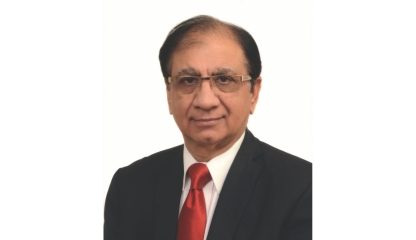India stepping forward to create a global identity in the MICE World
By Prashant Nayak — Interview with Chander Mansharamani, Vice Chairman, India Convention Promotion Bureau (ICPB)
India’s MICE sector is steadily positioning itself as a serious rival to established global hubs. With a knowledge-driven economy, expanding convention infrastructure, and growing international appeal, the country is poised to become a preferred destination for large-scale, knowledge-focused events.
Lead
ICPB — the national body for MICE promotion, skills and policy support — is playing a central role in showcasing India’s potential, addressing gaps, and building a consistent brand that can attract global conferences and meetings.
India’s Strategic Advantages
India’s strongest edge is its knowledge economy combined with emerging world-class venues and competitive pricing.
- Extensive academic and research base: IITs, IIMs, 450 medical colleges, 400 agricultural universities, and numerous research institutions.
- Large-capacity convention infrastructure: venues such as Bharat Mandapam, Yasho Bhoomi, HICC, and JIO Mumbai capable of hosting mega conventions (10,000+ delegates).
- Cost advantage and strategic geography: competitive pricing for venues, hotels and services, and a location that connects Europe, the Middle East and the Asia–Pacific region.
- Strong experiential appeal: heritage tourism, spiritual retreats, Ayurveda, yoga and a diverse culinary landscape add value for delegates seeking memorable experiences.
Gaps and Challenges
To compete with established global MICE destinations, India needs to close several operational and service gaps.
- Centralised marketing: There is no consistent, permanent national marketing engine positioned like leading global convention bureaus.
- Last-mile connectivity: Access from airports, traffic congestion and public transport reliability vary and can deter organisers and delegates.
- Ancillary services: Professional AV, simultaneous translation booths, global-standard catering and logistics are not uniformly available across all venues.
- Quality and standards: Variability in service standards across the supply chain—training and certification for MICE professionals is uneven.
ICPB’s Role and Partnerships
ICPB aims to bridge government, industry stakeholders and global organisers by focusing on policy advocacy, branding, skills development and sustainability.
- Policy advocacy: working with the Ministry of Tourism to streamline conference visas, customs clearances, and licensing; pushing for fiscal incentives for organisers.
- Business facilitation: simplifying permit processes and improving the ease of doing business for event planners.
- Skills and standards: developing a national skills framework, launching skilling missions and partnering with IHMs, ICCA, IAPCO and MPI for professional training.
- City and state bureaus: encouraging local bureaus to market their cities while ICPB coordinates national-level promotion.
Branding India Globally
Strong, continuous international branding is essential. ICPB recommends active participation at global trade shows (IMEX, IBTM), closer alignment with Incredible India and relaunching "Meet in India" as a global brand — positioning India as "The World’s Meeting Point."
“We need to strategise to position India more prominently on the global MICE map, relaunch ‘Meet in India’, create city-level bureaus and aggressively bid for international events.” — Chander Mansharamani, Vice Chairman, ICPB
Future Strategies
Key strategies for India’s rise in the MICE world include:
- Sharpening a national MICE identity and consistent global messaging.
- Strengthening last-mile logistics and improving multi-modal connectivity around venues.
- Raising service standards via a national skilling mission and certification for MICE professionals.
- Aggressively bidding for international conferences and showcasing large-scale venue capabilities.
- Adopting sustainable practices across venues and events to meet global expectations.
Conclusion
With a powerful combination of intellectual capital, expanding infrastructure and cultural appeal, India has the potential to break into the top tier of global MICE destinations. Focused national branding, improved last-mile connectivity, higher service standards and targeted policy support from bodies like ICPB can accelerate India’s emergence as a preferred meeting point for the world.
